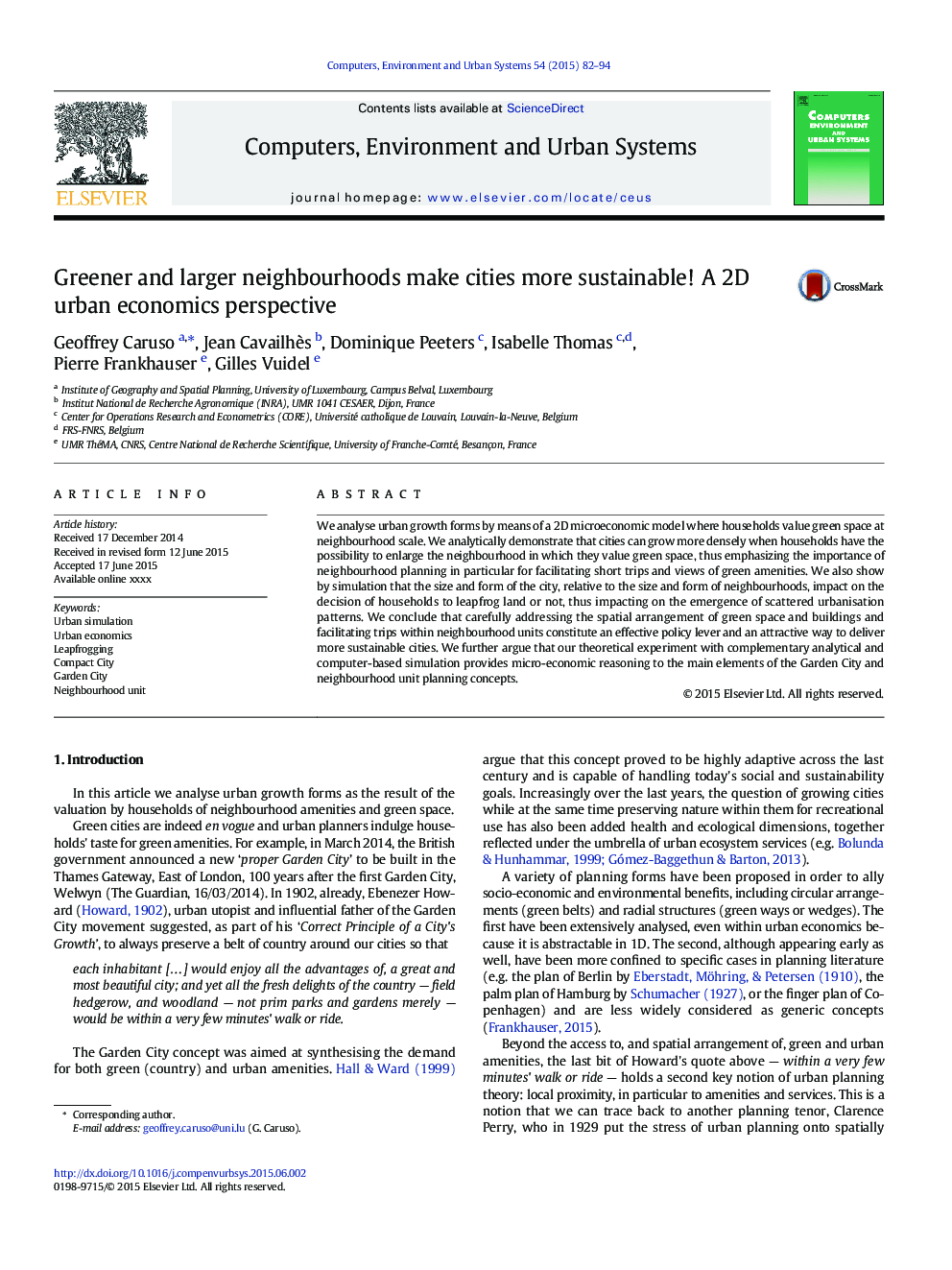| Article ID | Journal | Published Year | Pages | File Type |
|---|---|---|---|---|
| 6921928 | Computers, Environment and Urban Systems | 2015 | 13 Pages |
Abstract
We analyse urban growth forms by means of a 2D microeconomic model where households value green space at neighbourhood scale. We analytically demonstrate that cities can grow more densely when households have the possibility to enlarge the neighbourhood in which they value green space, thus emphasizing the importance of neighbourhood planning in particular for facilitating short trips and views of green amenities. We also show by simulation that the size and form of the city, relative to the size and form of neighbourhoods, impact on the decision of households to leapfrog land or not, thus impacting on the emergence of scattered urbanisation patterns. We conclude that carefully addressing the spatial arrangement of green space and buildings and facilitating trips within neighbourhood units constitute an effective policy lever and an attractive way to deliver more sustainable cities. We further argue that our theoretical experiment with complementary analytical and computer-based simulation provides micro-economic reasoning to the main elements of the Garden City and neighbourhood unit planning concepts.
Related Topics
Physical Sciences and Engineering
Computer Science
Computer Science Applications
Authors
Geoffrey Caruso, Jean Cavailhès, Dominique Peeters, Isabelle Thomas, Pierre Frankhauser, Gilles Vuidel,
